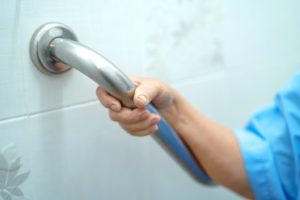
Most people think of their homes as a safe place. That’s as true for senior citizens as it is for kids or younger adults. Yet, the numbers suggest that senior citizen safety is a real and pressing need.
Falls alone account for around 3 million seniors in emergency rooms each year. When you add in burns, infections, sprains, and joint dislocations, the number of hospital visits grow profoundly. So, if you have a senior in your life, how can you balance their need for independence with home safety.
Keep reading for five safety tips for seniors.
- Keep Emergency Numbers on Hand
In the event of an emergency, spending time to try to find the right emergency number wastes precious time. Even if you program the numbers into a smartphone’s contact list, scrolling for the right contact can take longer than simply dialing.
Write down crucial numbers like poison control, local police, physician, and family. Post it somewhere easy to see, such as the fridge or by a landline.
- Fall-Proof the Space
Limiting the ways a fall can happen makes any senior safer. Install handrails in tricky areas, like the stairs and showers. Put non-slip mats or carpets into the home. You can also get non-stick treatments for normally smooth materials like tile.
- Leverage Technology
Technology offers a lot in terms of improving safety. At the less complicated end of things are flip phones with large buttons and motion-activated cameras that you can check periodically.
At the more complex end of things are monitoring systems that use pendants and bracelets. You learn more about these systems here to help you make the right choice for your situation.
- Do Fire Safety Sweeps
A basic fire safety sweep should come high on your home safety checklist. Keep an eye out for loose candles or space heaters, since those can trigger fires if left unattended. Check the batteries in all the hazard detectors, such as smoke detectors.
Check appliance cords and make sure they remain undamaged. If you find damaged cords, replace either the cord or the appliance. In some cases, newer appliances may prove safer and cost less on the utility bill.
- Mind the Lighting
Poor lighting can cause a fall simply because a senior doesn’t see a trip hazard. Check all of the fixtures in the home periodically.
Replace any dead bulbs. If you find a non-functional fixture, repair or replace it with a fixture that offers better lighting.
Building a Safe Place for Seniors
Building a safe place for seniors means that you must reassess their home with at least a touch of little paranoia. Ask yourself what things look unsafe and take steps to remedy that threat.
Since falls and fires prove such a dire threat to seniors, start there. Do a fire sweep of the home and install fall prevention options, such as safety railings and non-slip mats. Don’t forget that you can also deploy technology to help a senior remain safe in their home.
Looking for more senior safety and lifestyle tips? You’ll find plenty of posts in our Blog section.